The 1973 Oil Crisis: 40 Years Later
Forty years ago this month, the Organization of Arab Petroleum Exporting Countries (consisting of OPEC’s Arab members plus Egypt, Syria and Tunisia) began an oil embargo that would last through March of 1974.
The Bell Tolls Over Seattle, but Not for Most Commuters
It would appear as though the price of admission to traverse the longest floating bridge in the world on a daily basis has had quite the impact on commuting patterns in Seattle. A study to be issued by the U.S. Department of Transportation this week – barring another tragicomic display by the powers that be, of course – has uncovered that use of the Governor Albert D. Rosellini Bridge – Evergreen Point (colloquially known as the 520 floating bridge) has gone down by half since tolling began near the end of 2011.
A Vision Of The Future: A Day In The Life Of Bob Jones
The following article is long. Some of you will decry it as fiction outside of the space this website normally reserves for stories and others of you will lament its presence on what is supposed to be an automotive news website. Maybe you are right, but the truth is that I read a lot and my mind is constantly pulling at a million disparate threads of information and tying them together in ways that make unusual patterns. Some of these things have coalesced this week into the following piece and so I have offered it to the editors to see if they think it has a place on our esteemed pages. If you are seeing it, then they have given it the green light and all I can do is ask you to indulge me.
Articles about the future used to show up in the newspapers and the magazines with surprising regularity when I was a kid. They were great reading and were almost always accompanied by large, full color illustrations by noted artists like Syd Mead that fleshed out the words out surprising detail. In virtually every case, despite much of the turmoil going on in our country in the 1970s, those articles painted a picture of a better, brighter future. Now more than a third of the way through the second decade of the 21st century, we all know that things didn’t turn out quite the way those old articles imagined but that doesn’t mean that we should stop trying to predict what is coming. I can’t help but think that a better tomorrow really is right around the corner.
Is America's Love Affair With The Car Over? Americans Driving Less
Is the American love affair with the automobile over? Total miles driven in the United States peaked in August of 2007, then dropped during the recession and has leveled off since then, though the economy is growing slightly and the population is increasing. According to the Detroit News, the Federal Highway Administration just reported that miles traveled during the first six months of 2013 continued the trend, being down slightly from 2012.
Individual miles traveled actually peaked in 2004, at about 900 miles per driver per month. By mid 2012, that had dropped to 820 miles per month. Per capita automobile use is now about where it was in the late 1990s. Until then, driving mileage generally tracked economic growth, according to U.S. Transportation Department economists Don Pickrell and David Pace ( PDF presentation here). Since the late 1990s, though, the when the economy has grown, it has grown more rapidly than car use.
Volvo Reveals Self Parking Car
The internet is abuzz with Volvo’s newest You Tube video of an autonomous self-parking car. The website Motorauthority is even going so far as say this feature will be offered on the upcoming 2015 XC90.
The system, by the way, is not truly autonomous in the sense that your car will wander around seeking a spot until it finds one. It will, rather, work with specific parking garages set up with an interface that will guide the car to open parking places. An in-car system will notify the driver if the service is available and if there is an available space. Sensors in the car will allow the vehicle to interact with other non-autonomous cars and people.
Naturally this whole thing adds further fuel to the fire of autonomous cars and the regulatory implications of a vehicle operating without a licensed driver behind the wheel. In this author’s opinion, Volvo is clearly pushing the envelope if they plan on including this feature on a vehicle in the next few years. Likely this system will first see operation in large parking facilities located on private property to avoid the various legal issues that are sure to crop up. Still, the future must start somewhere and, as I have said before, I welcome the better, brighter future our new robot masters are set to deliver.
South Carolina Studying Computer Networked Electronic License Plates
South Carolina’s WSPA TV is reporting that the South Carolina Department of Motor Vehicles is considering doing away with stamped metal plates and replacing them with new, electronic tags that would be linked to a central computer database. According to WSPA’s website, the new plates use “electronic paper” technology that can hold an image without power for up to 10 years. A clear coating on the plates could also generate small amounts of electricity, which would be required to change the image, from sunlight or even vibrations generated when a car is in motion.
Rotten Roads Ahead: U.S. Infrastructure Is Falling Apart
The U.S. transportation system is in danger of falling apart, and will take down the economy with it, Bill Shuster, chairman of the House of Representatives Transportation Committee, said today while Reuters was keeping notes:
Ask An Engineer: Natural Gas For Dummies
Westport Innovations has just signed a second deal with General Motors to produce light duty natural gas engines, and it’s probably not the last time we’ll be seeing these kind of partnerships forming. Natural gas vehicles have been explored previously on TTAC, but the technology hasn’t been fully explored in-depth, aside from some well-informed comments in various articles.
CARB Wants 15.4 Percent Of New Cars To Be Plug-In, Hydrogen By 2025
CARB has mandated that 15.4 percent of new vehicles sold in California by 2025 must be plug-in, electric or fuel cell powered. The new mandate was supported by major OEMs and could mean as many as 1.4 million zero-emissions vehicles (as well as plug-in cars) on California roads by 2025.
Center For Automotive Research: Plant Closures Not So Bad After All
After intensive study, the automaker and union-funded think tank, the Center For Automotive Research (CAR), came to the conclusion that closing down automotive manufacturing sites is not as catastrophic as originally thought. Nearly half of the 267 U.S. automotive manufacturing plants that had been shuttered since 1979 have come back to life.
The War On Drivers: "Car-To-X" Communication System Testing Begins
Ford Kills Historic Assembly Plant, Ranger RIP
According to many news sources, the historic Twin Cities Assembly Plant in St. Paul, Minnesota is headed for a not-so-grand finale. Come December 19th, the 86-year-old facility that originally built Model Ts will be history. Ironically, Twin Cities is currently making the T’s spiritual successor: the (somewhat iconic) Ford Ranger compact truck. So shall we, the collective group of automotive journalists, lament the loss of this famous nameplate from Ford’s storied past?
US House Committee Blasts National Toll Road Bank Proposal
A top congressional leader on Wednesday made clear his opposition to President Obama’s idea of spending $10 billion to create a national infrastructure bank ( view details). The bank, part of the White House jobs bill, would offer public subsidy for the financing of “public private partnerships” — which most often would take the form of a toll road. The chairman of the US House Transportation Committee said at a hearing the president’s plan would not advance.
“A national infrastructure bank is dead on arrival in the House of Representatives,” Chairman John Mica (R-Florida) said. “If you want a recipe to put off job creation, adopt that national infrastructure bank proposal.”
Credit Ratings Agency Warns of Tolling Troubles
Toll roads at one point appeared to be unstoppable. Steady growth in traffic yielded rapidly rising profits, especially for pioneers in the field such as Australia’s Macquarie Bank where executives became so rich from deals that included the leasing of US roads that it was dubbed the “millionaires’ factory.” That all changed when the recession took hold and motorists scaled back on the mileage driven each year. Losses began to mount, and as a report released last week by Fitch Ratings argues, the dynamics for tolling may not improve in the near future.
“Fitch tracks data on toll roads, bridges, and tunnels across its ratings portfolio,” Fitch analysts wrote in the report, Downshifting: US Transportation Reacts as GDP Growth Flattens. “Traffic declined year over year as much as 10 percent during the Great Recession. Sustained positive growth in traffic commenced in February 2010. The most recent Fitch data indicates that growth in traffic volumes began slowly declining on tolled facilities, heading to zero growth in second-quarter 2011.”
How Much Do You Pay To Park?
Colliers International has come out with its 2011 parking survey results for North America [ PDF] and the world [ PDF], and you might be surprised by what people pay on average to let their car sit somewhere. The global expensive parking crown (on a monthly basis) goes to London’s West End, which runs a cool $1,014 per month… by comparison, the US average is $155.22 per month. On a daily basis, Copenhagen takes the cake with $73.11, with the highest daily rate in the US coming to $41 per day in Midtown Manhattan. Puts things into perspective, doesn’t it?
Better Place Opens First European Battery Swap Station, Expands To Australia
Though it doesn’t get the play it deserves in the auto media, Project Better Place is one of the most ambitious, potentially disruptive plays anywhere in the world of cars, uniquely positioning itself to eliminate the biggest shortcomings of electric vehicles. TTAC was on hand when the “end-to-end” EV services firm opened its first battery swap station in Israel, and now the firm has launched its first European swap station in Denmark. Better Place’s single model, the Renault Fluence Z.E won’t be widely available in either of the two initial launch markets until later this year, but having sold over 70,000 of its initial order of 100k units from Renault, Better Place is keeping its foot on the gas… er, juice.
Oregon: Study Finds Light Rail System Rarely Used
A study released earlier this month by the Cascade Policy Institute questioned whether pricey mass transit options in Portland, Oregon are really being used by the public. The city has been a leader in securing funding for various forms of passenger rail and trolley systems. The Obama administration, for example, pledged $745 million in federal gas tax dollars to pay for the construction of a $1.5 billion, 7.3 mile light rail project connecting Portland to Milwaukie. Transportation Secretary Ray LaHood has singled out the city’s priorities as for praise.
“By adding innovative transit opportunities, Portland has become a model livable community, a city where public transportation brings housing closer to jobs, schools, and essential services,” LaHood wrote in March.
House Transportation Committee Blasts Transportation Stimulus
One of President Obama’s signature achievements, passage of $812 billion in stimulus funds at the height of the recession, was labeled a failure by the chairman of the US House Transportation Committee, which had jurisdiction over about eight percent of the projects funded. In a hearing yesterday, Representative John Mica (R-Florida) explained that the money did not end up going to needed infrastructure projects.
“This will go down in history as one of the greatest failures of a government program to stimulate the economy that mankind has ever created,” Mica said. “This is a trillion-dollar lesson.”
Japanese Parts Paralysis: Worst Situation Since The War
“This is the worst situation we’ve faced since the war,” a source close to Toyota told the Yomiuri Shimbun. The Japanese car industry is facing post-war-like shortages when it comes to auto parts. Toyota is short 150 parts positions, which can be anything from a bolt to a complete dashboard.
Dealerships are empty – of cars. Test drive cars do double duty as display vehicles. “We get a lot of customers coming in, but we don’t have cars to sell them,” a salesperson told the Tokyo paper.
Japanese Parts Paralysis: Toyota Japan Production On Half Rations Into The Summer
The March 11 tsunami is having long term effects on Japanese car production. Toyota, the world’s and by far Japan’s largest car company, is severely impacted. Toyota just announced that vehicle production from May 10 to June 3 will proceed at approximately 50 percent of normal.
Tsunami Hits Home: Fewer Cars, Higher Prices For Months To Come. Surprised?
In a memo that surprises no-one that has followed TTAC’s extended coverage of the March 11 earthquake and tsunami, Toyota’s U.S. chief Bob Carter warns dealers that deliveries of parts and cars could be severely restricted for months to come. “What we don’t know are vehicle production levels for May through July,” Bob Carter wrote in a memo. “The potential exists that supply of new vehicles could be significantly impacted this summer.” You have seen this coming.
Parts Paralysis Daily Digest, March 23
Our daily run-down of delays, shut-downs, shortages, and postponements.
- Toyota will delay the introduction of the wagon version of the Prius hybrid in Japan. A launch event was planned for late April. This event is cancelled; a new date has not been set. The Nikkei [sub].
- Toyota will also delay the minivan version of the Prius, Reuters adds.
What's Wrong With This Picture: The State Of The EV Infrastructure Edition
Good news! Google Maps will now point you to the nearest “electric car charging station” if you search for same, reports CR.
[Google] is working with the National Renewable Energy Laboratory, which is developing a database of available charging stations (known as EVSEs, or electric vehicle supply equipment) around the United States. Installers of EVSEs have the option of having their stations displayed as public. When we were charging the Nissan Leaf at our facility, not a public venue, our chargers showed up on the Leaf’s navigation system; The navi in the Leaf is designed to remember sites at which it had been charged.
The bad news? Well, just look at that map. Unless you live in California, you don’t need Google to tell you where the nearest charging station is, you need a clairvoyant to tell you where one might someday be built. If you’re still struggling to understand why EVs need to be tested on a local level before the federal government spends more money subsidizing them on a national level, look no further.
[UPDATE: The screen grab above is not comprehensive. Surf over Google Maps for a closer look at EV charging stations in your area]
Parts Shortages Threaten Production Outside Of Japan
“The ripple effect of the stoppages to supply and production in Japan will be felt in many parts of the world, including the United States, China, and Europe, as many key parts and technology are exported to global operations from Japan, writes IHS Global Insight in a research report. “Disruption to production of parts that are unique and cannot be easily shifted has the potential to hit output badly at several automakers in the near term.”
First to be hit will be Japanese production sites overseas which often import 20 percent or more of their parts from back home.
However, plants owned by U.S. or European companies are not immune.
Power Shortages To Impact Japanese Car Production For Months To Come
Even if Japan’s nuclear power plants will be brought under control, even if roads, rails and ports are back up, the Japanese car industry will have to deal with a more serious problem: Blackouts.
On Monday, Tokyo Electric Power, or Tepco, will start turning off the power for three hours each to selected areas. This will happen once, in some areas twice per day. When the schedule was put up on Tepco’s website, the server crashed. That was just the beginning of the problems.
Rear-Drive Holdens Meets Battery-Swap In Australia
For most Americans, the appeal of electric vehicles is somewhat blunted by the fact that they tend to be small, European-style hatchbacks rather than large, red-blooded “American-style” sedans. But what if large, rear-drive electric sedans were developed, using battery-swap technology that could allow battery-leasing business models and instant range-extension? Might Americans rethink a few of their long-held stereotypes about EVs?
Well, the United States isn’t the only nation facing this dilemma, and unlike the US, Australia is actually doing something about it. Australian automotive suppliers, Air International, Bosch, Continental and Futuris, have teamed up with Project Better Place to develop seven “proof of concept” Holden Commodore-based rear-drive electric sedans that could be the first of their kind [ press release here in PDF] in a joint venture called EV Engineering. The project is part of Australia’s effort to revamp its automotive industry by 2020.
The Battle Of The EV Business Models
Consulting firm Accenture took a look at a number of EV pilot programs in hopes of gaining some insights into how exactly the rise of plug-in vehicles will change the automotive industry, the refueling infrastructure and the customer experience [ full PDF here], and came away with some interesting conclusions. First, the study finds that the market models for plug-ins will vary from region to region. That’s good news for the automakers, as it makes it less likely that they will be forced to comply with standards set by a single firm dominating a global market model. On the other hand, the regional variations in market models (more on the models themselves shortly) will worsen one of the major challenges of plug-in proliferation, namely scale. The study finds that scale, along with cost and grid control are the three factors that pilot programs can not provide insight into, and all three require “creative” solutions. And here’s where business-as-usual in the car business gets blown wide-open: the business models, rather than the vehicles themselves, are where the real competition is. So, what are the models?
Marin County Bans "Smart Grid": Will The EV Market Suffer?
California Legislative Analyst Blasts Public Private Partnership
The California legislature’s Legislative Analyst’s Office (LAO) blasted a public-private partnership deal between the California Department of Transportation (Caltrans) and investors for the development of Doyle Drive. The plan was to give a private company, Golden Link, a 30-year lease on this vital southern route to the Golden Gate Bridge to perform needed renovation to the route. The state would pay the consortium $173 million for finishing the road, followed by $28.5 million in “availability payments” each year the road is open.
Carmakers Snowed, Stop Lines
Due to missing parts, GM, Ford and Chrysler had to shut down plants in the U.S. and Canda, or put them on half shifts for the second day, Reuters reports.
Please Wait: Germany's Carmakers Swamped By Sudden Demand
Carmageddon? What carmageddon?
Germany’s auto industry has a huge problem: Way too many customers. “We have that fattest order books of all times,” said Esther Bahne of Audi to Germany’s Spiegel magazine. Result: Customers have to wait months for their cars. Sometimes longer than ever before, says Der Spiegel.
What's Wrong With This Picture: The Modern Speedbump Edition
Saturn Factory Coming Back Into Orbit? Update
A few weeks ago, I wrote about rumors circulating that the Saturn plant at Spring Hill, Tennessee may be coming back online as GM’s volume increases. Well, the rumors are getting stronger.
Geely To Double Volvo Capacity. In China
When Geely bought Volvo from Ford, the feel-good story was that production will remain ind Sweden, with maybe another Chinese factory for Chinese consumption. So much for that. Geely may build three Volvo plants in China, a Geely spokesman told Reuters today.
Los Angeles: Metro Accident Lawsuit Illustrates Light Rail Danger
More and more cities are thinking about installing light rail on city streets as the federal government holds out the prospect of greater subsidies diverted from gasoline tax funds. The California Court of Appeal on August 30 ruled that a lower court erred in throwing out a lawsuit against the city of Los Angeles for negligence in a fatal accident involving a metro Blue Line train. The incident reveals the significant threat high-speed rail can pose when run on streets designed for automobiles.
China's Government Worried About Unbridled Auto Industry Growth
If you think China’s auto growth is scary, then you find yourself in rare agreement with China’s central government. China’s 30 (!) major (!) auto makers had a production capacity of 13.59m vehicles by the end of 2009. Chinese bought 13.64m units. This year, it will be much more. By July, Chinese had already made and Chinese had already bought more than 10m units, according to data released by China’s Ministry of Industry and Information Technology.
Chinese buy more than just cars. They have bought (well, leased) enough land, buildings and machinery in order to more than double car output by 2015. With the current expansion and investment plans exercised, China will have production capacity for a mind-blowing 31.24m units by the end of 2015. That according to Chen Bin, head of industrial coordination at the National Development and Reform Commission, the nation’s economic regulation agency.That’s more than six (!) times the U.S. production in 2009, and three times the U.S. auto production in the heydays of 2007. You are not the only one to get worried now. Even China’s NDRC thinks that might be a bit much.
Jetgate, German Style: VW Gets Out of The Airport Business
Remember jetgate? Imagine what congressional roasters would have said if they would have found out that their wards of the state not only own their own airline, but a sizable share of an airport? Unthinkable. In Germany, nobody bats an eye.
Ford And Taxpayers Giving Away 4,600 EV Home Chargers, Nissan Not So Much
Worried about the high MSRPs on most of the electric vehicles scheduled for launch over the next year? Don’t forget to include the cost of buying and installing a home charging station. Nissan reckons the charger for its Leaf will cost about $2,200, including a home electrical inspection [er, that’s a medical marijuana grow…] and installation. Oh, and it won’t be Nissan coming into your home: Aerovironment, a firm otherwise best known for its Unmanned Aerial Vehicles, has the contract to supply and install the Leaf’s charger. Coulomb Technologies supplies the home charger for Ford’s first EV, the Transit Connect EV, and according to Automotive News [sub], they’re partnering with Ford to give chargers away to the first 2,000 buyers of the electric-drive delivery van. But, as usual with good news in the EV sector, the charger giveaway is actually being funded by tax dollars…
And Now, The Charger Wars
Did you ever arrive in a foreign country, and the plug of your battery-depleted cell phone did not fit? Or worse, it did fit, and the charger went up in smoke? That’s nothing compared to the impending EV disaster. Buy an EV, and you will find yourself between the battle lines of plugs, voltages, and technologies. Imagine the horror: Guided by your GPS, you limp into a charging station on the last watts in your battery, and their round plug doesn’t fit your square socket.
China's Chery Picks Better Place. Possibly
Shai Agassi’s Better Place possibly clinched a possibly better deal than having three taxis running around in Tokyo. Possibly.
According to the Financial Times, Better Place signed a memorandum of understanding with China’s Chery “to develop prototypes for electric vehicles to be used in regional sate-sponsored pilot projects.” This could give Better Place access to what the FT calls “potentially the biggest future market for battery-powered cars.”
The system remains the same: switchable batteries that will be swapped at charging stations faster than you can swap-in the extra battery of your camera. If you can find it. Israel and Denmark are running tests. But these are tiny countries, and this is China.
Ashes To Ashes: Volcano Stops The Lines
The volcano on Iceland spews trouble for auto manufacturers. Ever since most of Europe has been declared a no-fly zone, just-in-time bit the dust. Literally.
Today, the lines stopped at the BMW factory in Dingolfing, writes Automobilwoche [sub]. On Wednesday, the lines will stop moving in Regensburg and on Thursday in Munich. More than 7000 bimmers are affected. The reason: Electronic parts that usually get flown in. Icelandic ash brings production lines all over the globe to a grinding halt …
Japan Tackles Electric Car Infrastructure Predicaments. Manufacturers Lower Prices
Japan appears to get extremely serious about all-electric cars. What stands in the way of their success? Apart from the price (we’ll get to that later:) It’s the infrastructure, stupid. Fabricating, fuelling, and fixing an ICE-powered car is supported by an infrastructure that had more than 100 years to grow. Keeping a plug-in running needs an infrastructure to guarantee mobility away from the charger at home. Japan’s Environment Ministry teams up with Nissan, Sumitomo, and other companies to build the infrastructure for electric vehicles, reports The Nikkei [sub].
Begun, The Bike-Car Wars Have
The DOT policy is to incorporate safe and convenient walking and bicycling facilities into transportation projects. Every transportation agency, including DOT, has the responsibility to improve conditions and opportunities for walking and bicycling and to integrate walking and bicycling into their transportation systems. Because of the numerous individual and community benefits that walking and bicycling provide — including health, safety, environmental, transportation, and quality of life — transportation agencies are encouraged to go beyond minimum standards to provide safe and convenient facilities for these modes.
Having spent most of his tenure chiding distracted drivers and hunting down demon-possessed Toyotas, Transportation Secretary Ray LaHood appears to be over the whole car thing. The policy statement above was just one element of his push to put bicycling and other car alternatives on an equal footing to cars in transportation planning, which he recently announced at the National Bike Summit.
Fiat Gets A Haircut And A Fine Brazilian. Sorry, A Brazilian Fine
While Toyota has recall troubles in one of their largest markets, elsewhere in the world, another carmaker has serious recall troubles in one of their biggest markets. We usually don’t comment on each and every recall everywhere, but this one warrants mention: Brazil’s Justice Ministry has fined Fiat’s Brazilian subsidiary 3 million Reais (about $1.7 million) for failing to comply with four recall orders. Fiat had been asked to recall Stilo models to fix a wheel problem that may (note the key word “may”) have caused 8 deaths since 2004, says Business Week. No recall followed.
1969 Automobile Revue: Russia Takes The Cake For Sexy Ads
The Geneva Auto Show always reminds me of one of my prize items of late sixties memorabilia: the 1969 Automobil Revue catalog that was always issued in conjunction with the Geneva show. Here are a few scans from some of the ads, which show another glaring reason for the collapse of the USSR: their car ads. If these two sexy guys posturing in front of the “new” Moskvich don’t quite turn your crank, I assure you, the Russians knew how to make straight sexy ads too:
Horrors! China Might Only Sell 20m Cars in 2012!
China’s car industry has big plans. According to the China Business Journal, cited by the Nikkei [sub], China’s top 14 automakers are planning and building for a combined output capacity of 23 million vehicles in 2012. “With other carmakers included, the total figure will likely top 25 million,” says the Nikkei.
Last year, China became the world’s largest auto market, with 13.64m vehicles sold. Demand is officially projected to grow by 10-15 percent a year, reaching 20m units in 2012. “Consequently, there is the possibility of excess capacity,“ worries the Nikkei. (They are ostensibly not worried about 20m cars being sold, an idea that makes peak oilers lose precious sleep while they are wearing out their – plastic – keyboards on the message boards.)
As far as this reporter is concerned, 5m excess capacity in 2012 would fall in the „nice problem to have“ category.
One, Chinese projections are notoriously lowballed.
South Carolina: Innovative Toll Road Goes Bust
The first public-private partnership toll road established as a not-for-profit corporation has gone bust. The Connector 2000 Association, which operates a sixteen-mile, four-lane toll road linking Interstates 85 and 385 in southern Greenville County, South Carolina, announced last week that it was in default on its financial obligations.
“Traffic on the Southern Connector was inadequate to permit the association to collect sufficient toll revenues to pay debt service on the bonds which came due January 1, 2010,” a Connector 2000 Association statement explained. “The association has been advised that the trustee has made no payment of any such debt service. An event of default currently exists… The association is actively negotiating the restructuring of its bonded indebtedness with the trustee, the South Carolina Department of Transportation (SCDOT), and certain owners of large blocks of the bonds.”
US DOT Removes Results Measurement From Transit Funding Decisions
US Transportation Secretary Ray LaHood announced on Wednesday that he would re-write funding guidelines to dispense with rigid cost-benefit analysis when deciding which transit programs should receive funds. Under the previous system, because motorists provided the majority of the funding through the gas tax, money was allocated to cost-effective transit programs that promised the greatest overall reduction in traffic congestion. In remarks at the Transportation Research Board annual meeting, LaHood explained that the objective criteria will be replaced by a set of goals.
What's Wrong With This Picture: Infrastructure As Art Edition
Feast your eyes on these images of the Mike O’Callaghan-Pat Tillman Memorial Bridge being constructed over the Colorado River near Hoover Dam. Sure, it cost taxpayers $160m, but just look at it. America may have lost its way in terms of auto manufacturing, but we’ve never stopped being the greatest country to explore by car. [Hat Tip: Dean Huston]



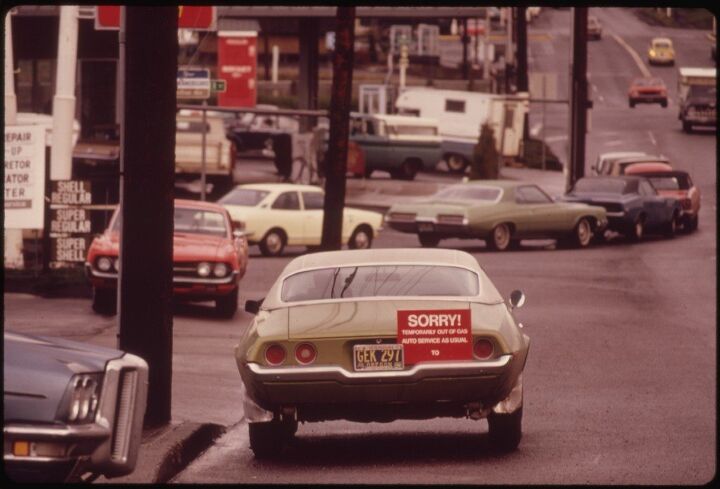




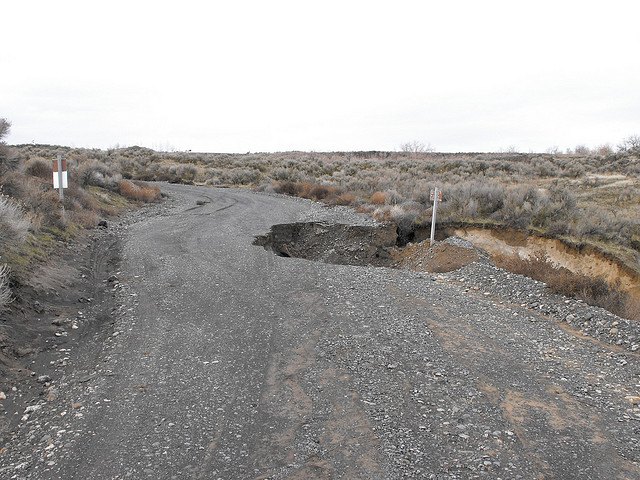

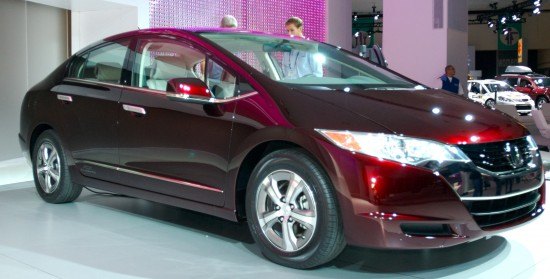
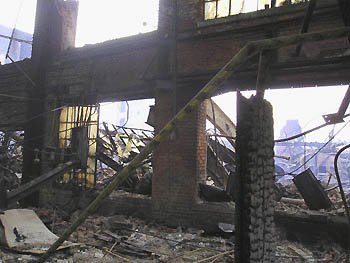




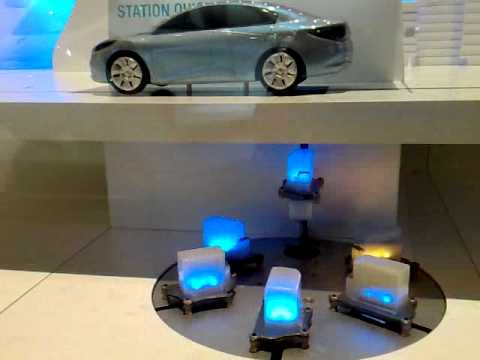

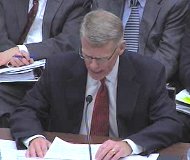


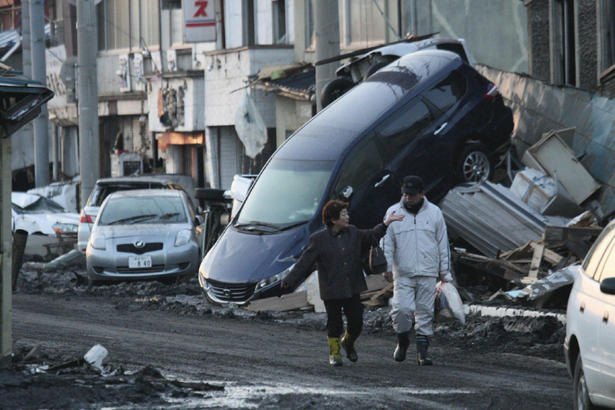








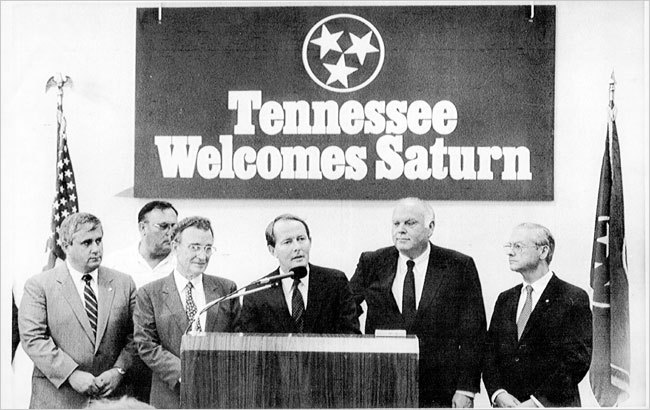
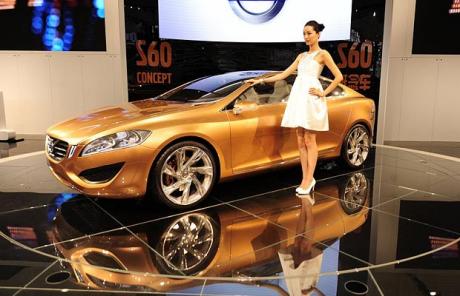
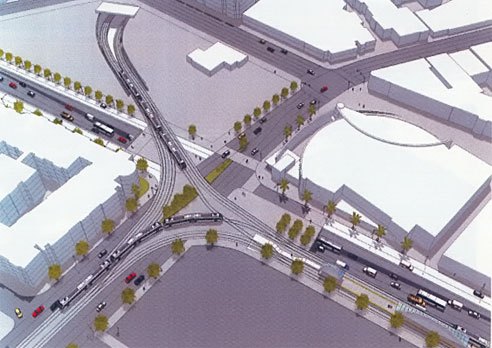

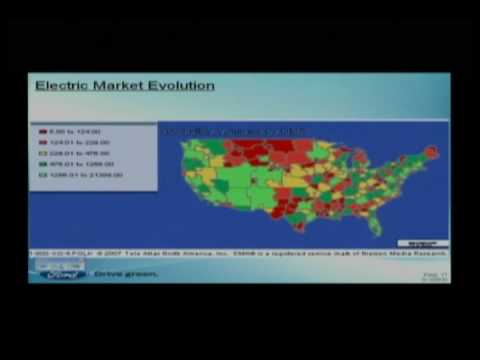
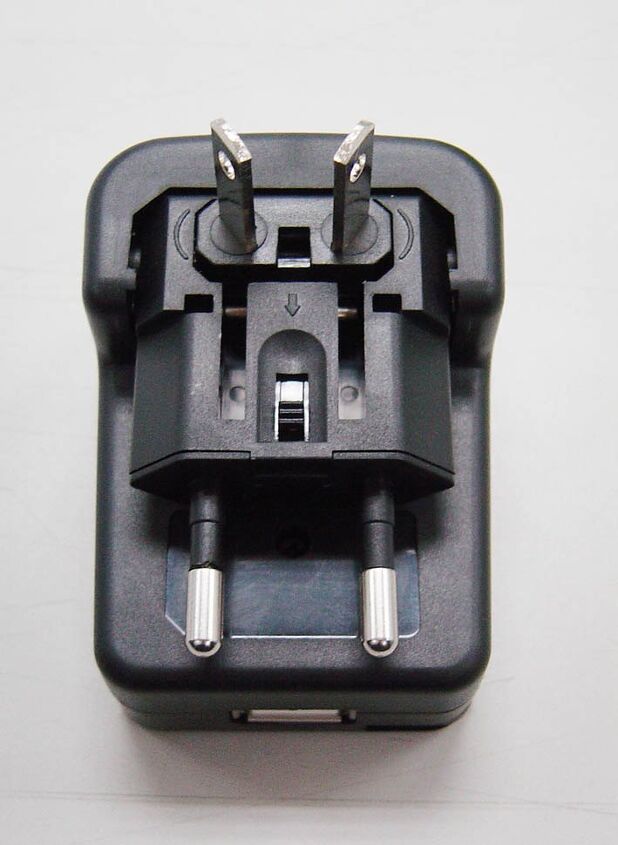
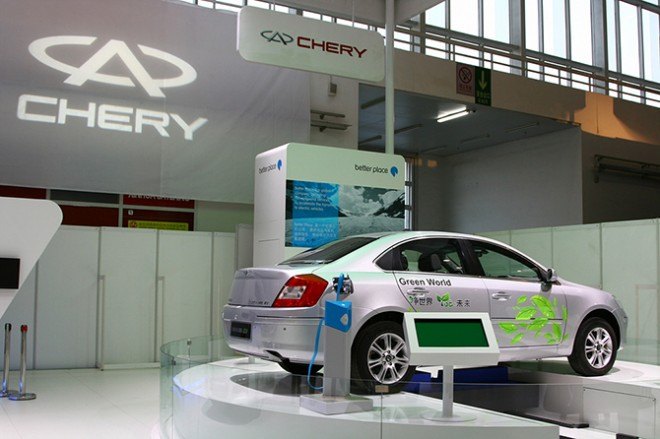
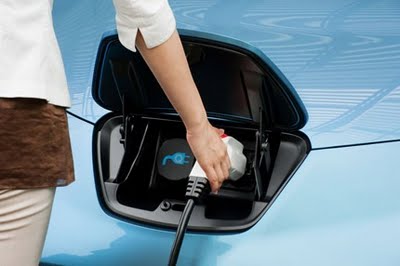

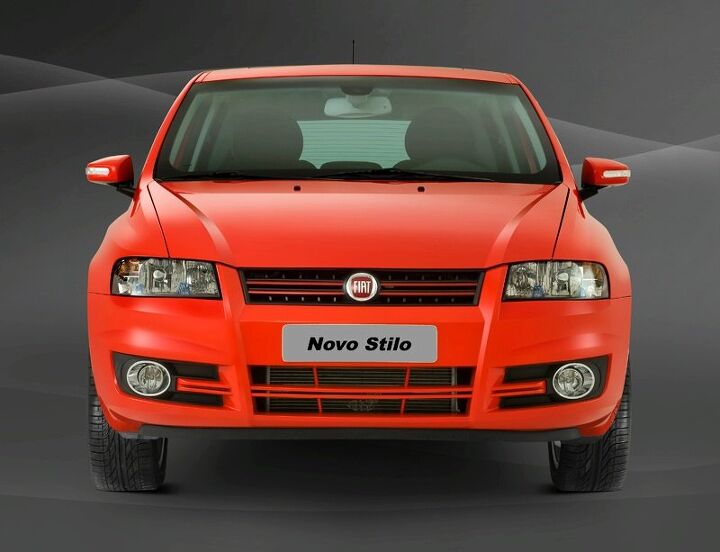

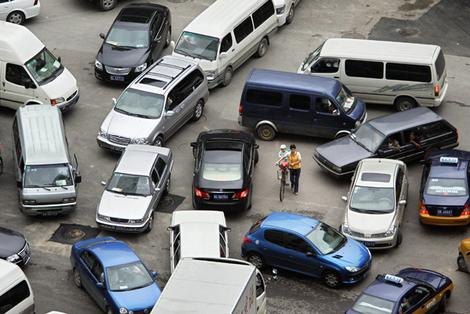
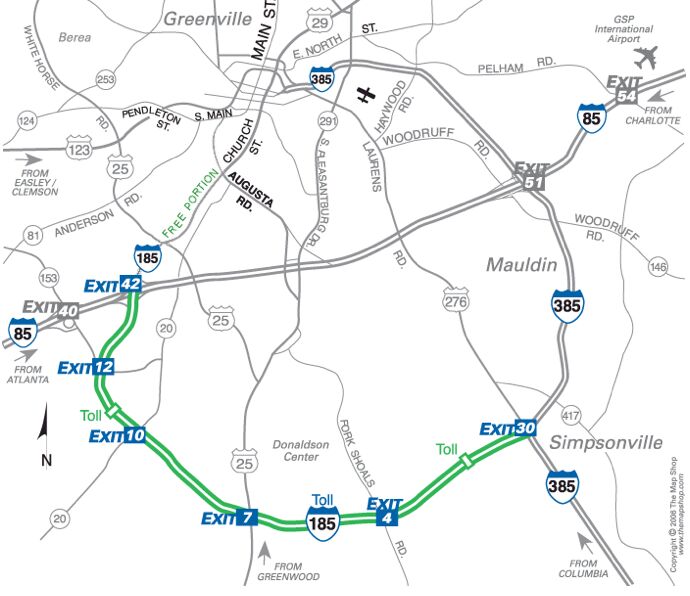
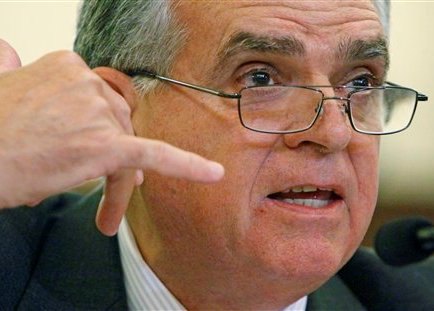
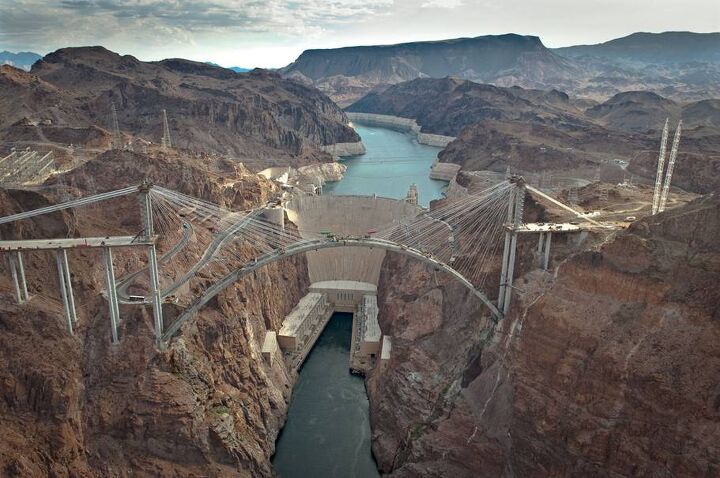












Recent Comments